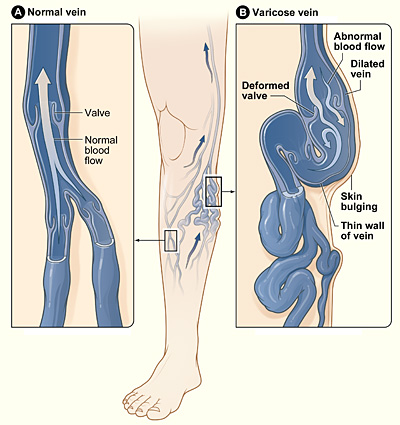What Causes Varicose Veins?
Veins, especially those in the legs, have to pump
the blood “up hill” to the heart, against gravity. Inside the veins
are one-way valves that help with pumping action and prevent blood from flowing
backward. These valves allow blood to flow in only one direction, toward the
heart. Varicose veins develop when the valves become weakened, damaged, or
don’t work well.
Weakness in the valves may be due to weakness in the
walls of the veins. This weakness tends to be associated with certain factors,
including increasing age, a family history of varicose veins, or high pressure
inside veins due to overweight or pregnancy.
When the walls of the veins are weak, they lose
their normal elasticity, like an overstretched rubber band. This makes them
longer and wider and causes the flaps of the valves to separate. Blood is then
able to flow backward through the valves, filling the vein and stretching it
even more. The vein becomes enlarged, swollen, and often twisted trying to
squeeze into its normal space.

The illustration shows the location
of leg veins, which can become varicose veins. Figure A shows a normal vein
with working valves and normal blood flow. Figure B shows a varicose vein with
deformed valves, abnormal blood flow, and thin, dilated (stretched) walls.
|

